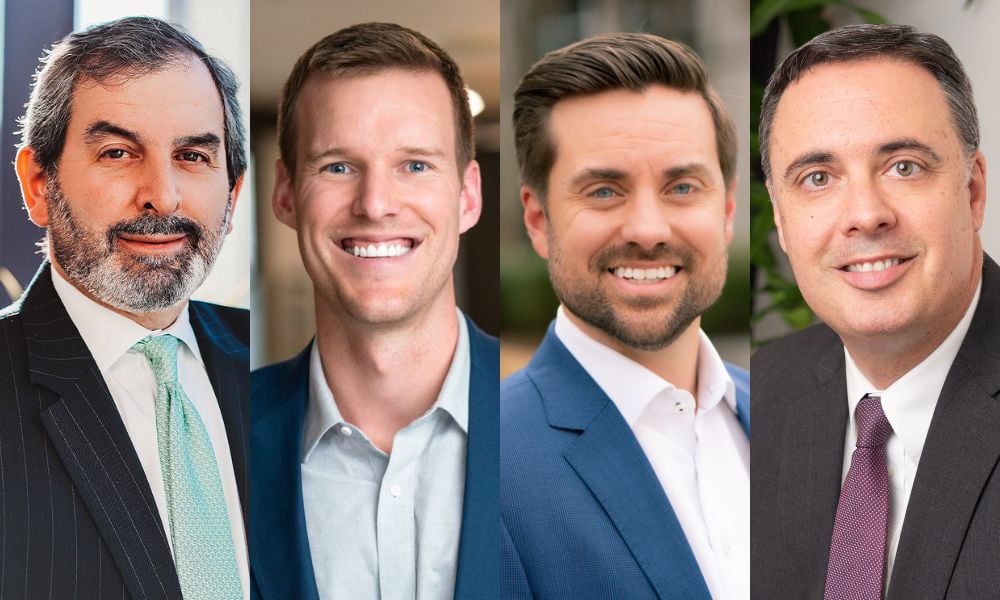

In describing how a financial advisor should approach a first meeting with a prospective client, RFG Advisory’s chief behavioral officer Brendan Frazier used an expression that should resonate with any journalism professor or editor:
“Nobody wakes up and says, ‘I want to meet with an advisor’ — they're there for a reason. What prompted this? They'll tell you why they're there,” said Frazier, whose RIA reported having $4.9 billion AUM in its latest Form ADV filed with the SEC on June 30.
"Don't bury the lead - put that very close to the beginning of the conversation."
A new study of 500 US adults with household incomes over $100,000 found that 97% of prospective clients will interview multiple advisors, according to advisor review site Wealthtender. To make a meaningful first impression, Frazier recommends advisors lean into teachings from Advice That Sticks, a book authored by psychologist Dr. Moira Somers.
“She has research in there that shows that the number one predictor of a client's satisfaction is the amount of air time that they get in a first conversation,” said Frazier. “The purpose of this meeting shouldn't be to tell them all the amazing things that I do as an advisor, so that they decide to work with me and become a client. The purpose of the meeting should be to spend time uncovering and learning from them what it is that prompted them to reach out, what they're struggling with, and then how we may be able to help.”
Advisors should look to uncover the "why now?" behind the timing of prospects seeking to meet.
“My number one goal is to learn, 'why have this conversation now?' and what they are looking for help with,” said David Bigelow, a wealth manager for the $12 billion RIA Coldstream. “Too often, RIA advisors lead with talking about themselves and their company, rather than focusing on the person in front of them.”
Among the most common mistakes advisors can make in an intro meeting is “pushing for commitment too soon,” says Boston Harbor Wealth Advisors CEO Matthew Davis. “Asking a prospect to become a client at the end of the first meeting — without having experienced the advisory process — can feel premature and transactional. A better approach is to allow for multiple meetings where the advisor can begin to demonstrate the quality of service and advice they offer.”
Rather than expecting to convert prospects into clients after one meeting, RIAs such as the California-based Halbert Hargrove have a three-meeting minimum process before determining if a match is to be made.
“Our second meeting — our discovery call — lasts 20-40 minutes and is more of an interview. It gives our team a chance to understand them on a deeper level. After this meeting, we develop a formal written proposal for the prospect to consider," said Halbert Hargrove senior wealth advisor Vincent R. Birardi. "We then spend our third meeting reviewing our proposal together. Quite often, we are ready to decide at the end of this meeting if we’re a good fit for each other,” Birardi said.
The concept of reflective listening — where an advisor repeats the language used by a client or prospect — is an effective way to build a rapport in an intro meeting or any time thereafter. For example, Frazier has a client who remarked, “feet in the sand and a drink in my hand” when discussing their own retirement, and it's a phrase Frazier continued to use to resonate with the client.
“When it comes to trust, people love to hear their own words repeated back. It instantly signals to you that I was listening, that I paid attention, that I cared,” said Frazier.
“Emotion can be used to establish connection,” added A.J. Sohn, SVP & private wealth advisor at Bridgeport Financial Solutions. “As in any regular social setting, finding common interests, experiences and connections are important. While the initial meeting is not used to solve client problems the advisor can make general comments about client goals or concerns to show they have experience and expertise with those issues.”
And in 2025, artificial intelligence is being leveraged by advisors to build a sense of human trust with their prospective clients. Reviewing AI-generated meeting transcripts or summaries can be critical in wording an effective follow-up email to clients after an intro meeting.
“One of the cool things that AI can do is it can help store some of these phrases, their language, their terminology, so that I can review it and know what we call it before meeting,” said Frazier. "But also when sending an email after the meeting, wrapping up our conversation, if you put in an email the language and the phrases that they use, it signals to them in that email response that you were paying attention.”

Market risk index shows hidden perils in seeking safety, and potential benefits from non-traditional investment vehicles.

Friends and family members are "the easiest type of victim to profile and steal from,” said one attorney.

The commissioner also known as "Crypto Mom" says the agency is willing to work on different models with stakeholders, though disclosures will remain key.

Cetera's policy advocacy leader explains how gig worker protection proposal might hurt independent financial advisors, and why it's "a complete outlier" in the current legal landscape.

Meanwhile, Osaic secures a new credit union partnership, and Compound Planning crosses another billion-dollar milestone.
Stan Gregor, Chairman & CEO of Summit Financial Holdings, explores how RIAs can meet growing demand for family office-style services among mass affluent clients through tax-first planning, technology, and collaboration—positioning firms for long-term success
Chris Vizzi, Co-Founder & Partner of South Coast Investment Advisors, LLC, shares how 2025 estate tax changes—$13.99M per person—offer more than tax savings. Learn how to pass on purpose, values, and vision to unite generations and give wealth lasting meaning
